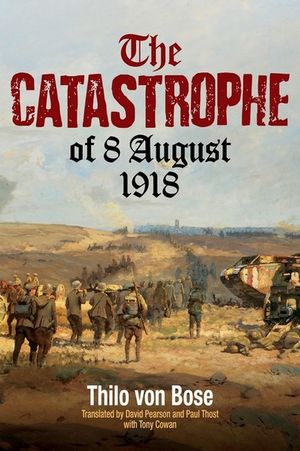Between 1921 and 1930 the 36 books of the German war series Battles of the World War were published – The Catastrophe being the final one of this German war history.

Hardback 456pp RRP $34.99
Considerable care has been taken in the translation as the original is in the Fraktur (Gothic) typeface that was phased out in 1941 and today few German speakers can easily read it. An outstanding feature is the original text appears on the verso of each page and the English translation has matching alignment on the recto.
Bose has been quite candid and written objectively without shirking any issues. He concentrates on just the 8th July, providing an impartial view of the exhausted state of the German 2nd Army’s troops, their strained logistical support, and failure by senior command to heed recent events that foreshadowed how the enemy would conduct their attack. Bose elaborates on the British 4th Army’s preparedness both physically and mentally, the build-up of materiel and increased reconnaissance that, with the element of surprise and virtual-zero visibility on the morning of the 8th caused by fog, had the Germans unable to react and implement any planned counterattacks.
The battle is prefaced by events in the period from March to early August, and activity north of the Somme from 6th to 7/8 August. The details of the involvement of each of the twelve German divisions is dealt with by location: north of the Somme, between the Somme and Amiens-Chaulnes railway, south of the railway and battle of the reserves in the LI Corps area. First-hand accounts have been widely and wisely used to provide the reader with an on-the-spot account of the conditions and difficulties on the day.
The initial research by the translators was to establish the history behind the 15-cm German gun located at the Australian War Memorial, Canberra. This was found in Bose’s Catastrophe. The translators have added a considerable amount of excellent supplementary material including the Order of Battle of both sides, abbreviations, ranks, a place name index, many high-quality photographs, bibliography, endnotes and facsimiles of maps and order of battle.
This work enables its readers to see the ‘other side of the coin’, and as such it plays a vital part in completing the comprehensive coverage of the turning point in the Great War.
Reviewed for RUSIV by Neville Taylor, November 2019
Contact Royal United Services Institute about this article.






